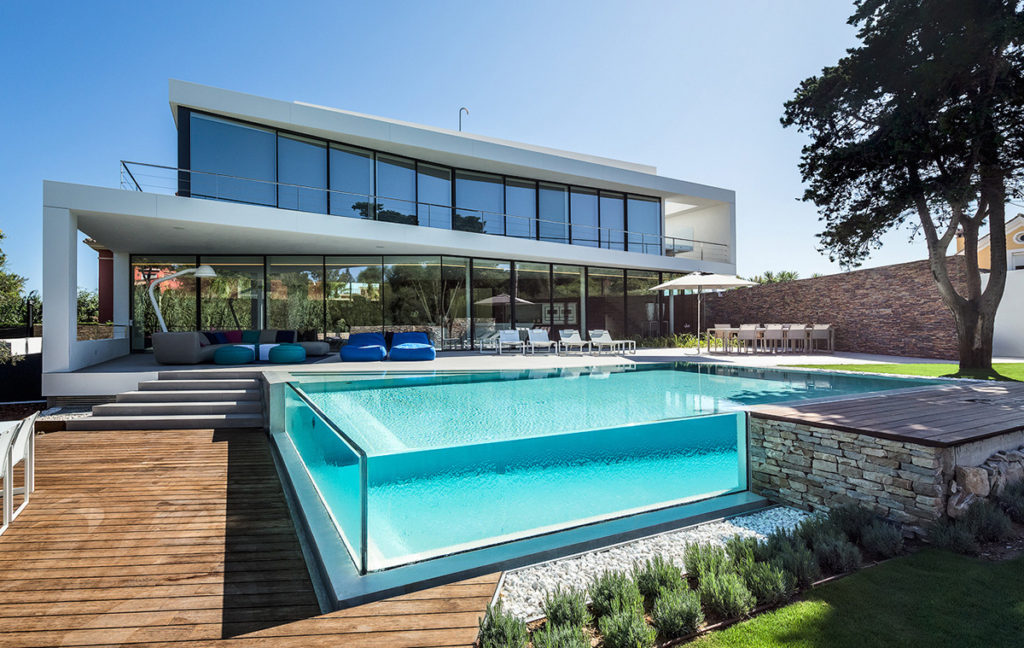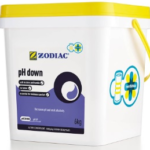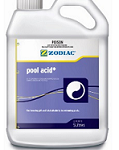Ensuring your pool pH level is balanced is a vital part in pool ownership. pH is what determines the water acidity. pH numbers range from 0 to 14 with the right pool water pH being between 7.2 and 7.8. If the water goes above 7.0, then it’s an indication that the water is becoming more alkaline.
What is the importance of an ideal pH level?
If the pH levels of your pool water are too high, the water becomes too alkaline and it starts to form scale on the surface of the pool and equipment, more importantly chlorine becomes less effective the higher the PH is. If the PH level is to low (below 7.0), the pool water is acidic. This causes corrosion on the pool surfaces and to the pool equipment. It is important to maintain the correct pH level in the pool, to avoid costly damage to the pool surfaces and equipment as well as to ensure the pool is properly sanitized and the water feels good to swim in.
How to lower pH in your pool

The first thing you need to do if you think that your pH levels are high is to test the swimming pool PH. After you have determined the pH level, then you can start looking for ways on how to lower pH in pool. High pH levels in pool can be reduced with an acid. Some of the most common pool acids are:
• Hydrochloric acid and
• Dry acid (sodium bisulphate).
Sometimes they may be referred to as pH minus, pH decreaser and pH reducer. It’s important to know what chemical you are purchasing because the way you add the chemicals is critical.
How to lower pH in pool with dry acid (Sodium Bisulfate)

• Carefully read the instructions on the label since different manufactures have different percentages for Sodium Bisulfate.
• How much acid do you need to add? This will depend on the results you got after testing you pool water. We recommend that you add three quarters of what is recommended and then test later until you feel comfortable. The most important thing is that you do not add too much of it.
• Sodium Bisulfate often comes in powder form so you will want to avoid working with it on a windy day. If you live in an area that’s breezy, then you have no option. But you can try and add it downwind from you since you don’t want to spill the acid, or have it blow onto your clothes or worse the skin.
• Get as close to the water level, as you possibly can because the wind will easily blow the powder into the air instead of into the pool.
• Pour the powder into your pool at the water return jet sites. This is where the water comes into the pool. Do not add the powder to the water in the skimmer area. It’s important that the dry acid is evenly spread around the pool so that it reaches all the corners. Be aware of wind direction at all times.
• Give it about 5 to 15 minutes as it dissolves on its own completely.
• Allow the chemical to mix before you retest, then add more if necessary.
Always follow the manufacturers recommendations when adding pool chemicals. Sodium Bisulfate will decrease the pH as well as the alkalinity. You will need to test for both after you are done.
How To Lower Ph In Your Pool With Hydrochloric Acid
•  Always read the manufactures’ instructions first. This is a dangerous acid that will burn your skin and ruin your pool surfaces if it’s not used properly. Ensure you also have the correct protective wear.
Always read the manufactures’ instructions first. This is a dangerous acid that will burn your skin and ruin your pool surfaces if it’s not used properly. Ensure you also have the correct protective wear.
• Establish the amount of hydrochloric acid you need to add to your pool based on the pH levels you have tested. You can add three quarters of what is recommended and then test the pH later on until you get the desired results.
• The manufacturer’s instructions may recommend that you dilute the hydrochloric acid first. Please follow these instructions.
• Although hydrochloric acid is liquid, you still don’t want to pour it into the pool while facing the wind, as the fumes will damage your health.
Avoid pouring the acid into the filter basket or skimmer, as this will cause damage to pumps, heaters, chlorinators etc.
CAUTION
When adding any type of acid into the pool, extreme care must be taken, as ignorance can lead to serious burns. Before you add the acid, ensure there is nobody swimming in the pool.
Make sure you add the acid to water, never add water to acid! If you plan to add large amounts of acid, do it slowly. Don’t add high acid amounts in the pool all at once. If you pour too much acid into the pool in one go, you risk damaging the walls, corroding the pump fittings and pipes and lowering the total alkalinity of the water.

